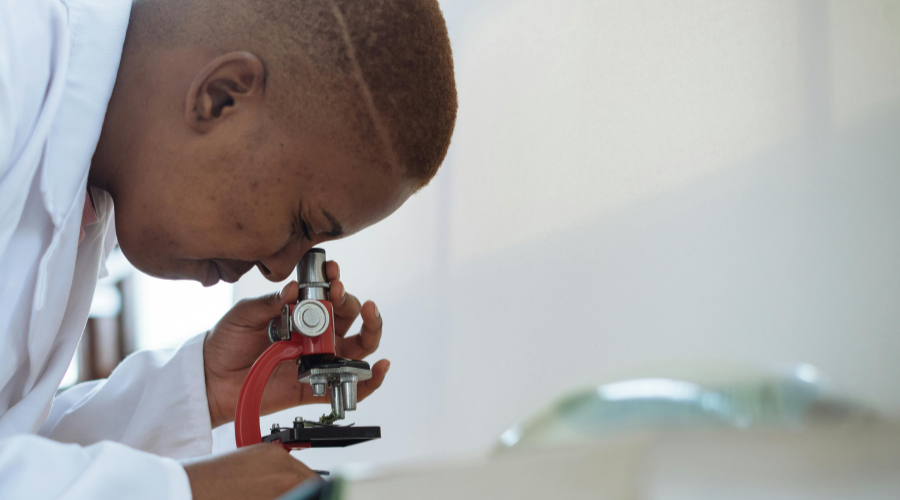After giving birth, you may notice some unexpected changes to your body, including unwanted facial hair growth. While this can be distressing, postpartum facial hair is a common and temporary side effect of pregnancy hormones.
As your body readjusts, you may find yourself dealing with new chin hairs or a faint mustache. Fortunately, there are safe and effective ways to manage this issue while your hormone levels stabilize. This article will explore the causes of postpartum facial hair and provide practical tips for removing it safely during this sensitive time. With the right approach, you can feel confident and comfortable in your postpartum skin.
Why Postpartum Hormones Cause Excess Facial Hair
The Hormonal Rollercoaster
After giving birth, your body experiences a dramatic shift in hormone levels. During pregnancy, elevated estrogen and progesterone levels suppress hair growth. However, these hormone levels plummet postpartum, leading to a relative increase in androgens - male hormones like testosterone. This hormonal imbalance can trigger excess hair growth, particularly on the face.
The Role of Androgens
Androgens play a crucial role in stimulating hair follicles, especially in areas typically associated with male hair patterns. As your body adjusts to its non-pregnant state, the temporary surge in androgen levels can cause unwanted facial hair to sprout. This phenomenon, known as hirsutism, is a common yet often overlooked postpartum symptom.
Temporary vs. Persistent Changes
For most women, this increase in facial hair is temporary. As your hormone levels stabilize over the months following childbirth, you may notice the excess hair gradually diminishing. However, some women may experience more persistent changes, particularly if they have a predisposition to hormonal imbalances or conditions like polycystic ovary syndrome (PCOS).
Individual Variations
It's important to note that every woman's postpartum experience is unique. Factors such as genetics, ethnicity, and pre-existing hormonal conditions can influence the extent and duration of facial hair growth. While some may barely notice a change, others might struggle with more significant hair growth.

When Postpartum Facial Hair Growth Will Subside
Understanding the Timeline
For many new mothers, postpartum facial hair can be a frustrating and unexpected side effect of pregnancy. You might be wondering when this unwelcome change will resolve itself. While every woman's experience is unique, there's typically a predictable timeline for hormonal balance to be restored.
The Hormonal Rollercoaster
During pregnancy, your body experiences a surge in hormones, particularly estrogen and progesterone. After delivery, these hormone levels drop dramatically, which can trigger various changes, including increased facial hair growth. This hormonal fluctuation is temporary, but it may take some time for your body to adjust.
Patience
Most women find that their hormone levels stabilize within 3 to 6 months postpartum. As a result, you may notice a gradual reduction in excess facial hair during this period. However, it's important to remember that for some women, particularly those who are breastfeeding, hormonal changes can persist for up to a year after giving birth.
If you're concerned about persistent facial hair growth beyond this timeframe, it's advisable to consult with your healthcare provider. They can assess whether there might be underlying factors contributing to the issue and recommend appropriate treatments if necessary.

Safe & Effective Ways to Remove Facial Hair
Gentle Depilation Methods
When dealing with postpartum facial hair, it's essential to choose removal methods that are safe for your sensitive skin. Shaving is a quick and easy option, but be sure to use a sharp, clean razor and shave in the direction of hair growth to minimize irritation. Alternatively, depilatory creams can dissolve hair at the skin's surface, though it's crucial to patch test first and avoid using them too frequently.
Long-Lasting Solutions
For longer-lasting results, consider waxing or threading. These methods remove hair from the root, resulting in smoother skin for weeks. However, they can be more painful and may cause temporary redness. If you're breastfeeding, consult your doctor before using any chemical-based hair removal products.
Professional Treatments
For a more permanent solution, you might explore electrolysis or laser hair removal. These professional treatments target hair follicles to reduce regrowth over time. While effective, they require multiple sessions and can be costly. Always choose a licensed practitioner and discuss any concerns about postpartum hormones affecting the treatment's efficacy.
Remember, postpartum facial hair is often temporary. Whichever method you choose, be gentle with your skin and give yourself grace during this transitional period.
Top Facial Hair Removal Products and Tools
When it comes to managing postpartum facial hair, having the right products and tools at your disposal can make all the difference. Here are some effective options to consider:
Gentle Hair Removal Creams
For those seeking a painless solution, depilatory creams specially formulated for facial use can be a great choice. These creams dissolve hair at the surface of the skin, making them ideal for sensitive postpartum skin. Look for products containing natural ingredients like aloe vera or chamomile to soothe and nourish your skin while removing unwanted hair.
Precision Facial Trimmers
Electric trimmers designed specifically for facial hair offer a quick and easy way to maintain your appearance. These battery-operated devices are perfect for targeting small areas like the upper lip or chin. Opt for a waterproof model for added convenience and easy cleaning.
Threading Tools
If you're comfortable with more traditional methods, at-home threading kits can be an excellent option. These tools allow you to remove hair from the root, resulting in longer-lasting results. While there's a bit of a learning curve, threading is gentle on the skin and provides precise control for shaping eyebrows and removing facial hair.
Soothing Aftercare Products
Regardless of the hair removal method you choose, it's important to care for your skin afterward. Look for alcohol-free toners and calming moisturizers to reduce irritation and redness. Products containing ingredients like witch hazel or aloe vera can help soothe your skin and prevent ingrown hairs.
Facial Hair Removal Tips and Precautions
Safe Removal Methods for Postpartum Facial Hair
When dealing with postpartum facial hair, it's crucial to choose gentle, safe removal methods. Threading and tweezing are excellent options for precise hair removal without irritating sensitive skin. For larger areas, consider using depilatory creams specifically formulated for facial use. However, always perform a patch test first to ensure your skin doesn't react negatively.
Timing Your Hair Removal Routine
It's important to time your facial hair removal carefully during the postpartum period. Wait until at least 6-8 weeks after delivery before starting any new hair removal regimen. This allows your hormone levels to stabilize and reduces the risk of skin irritation. Additionally, if you're breastfeeding, consult with your healthcare provider about the safety of any products you plan to use.
Skincare Before and After Hair Removal
Proper skincare is essential when removing postpartum facial hair. Before hair removal, gently cleanse your face with a mild, fragrance-free cleanser. After removal, apply a soothing, alcohol-free moisturizer to calm the skin and prevent irritation. Consider using products with ingredients like aloe vera or chamomile to reduce redness and inflammation.
Remember, patience is key. Postpartum hormonal changes can take time to resolve, and your facial hair growth may naturally decrease over time. If you're concerned about persistent or excessive hair growth, don't hesitate to consult with your healthcare provider for additional guidance and treatment options.
As you navigate the postpartum period, remember that facial hair changes are a common and temporary experience for many new mothers. By exploring the safe removal options discussed, you can find an approach that works best for your skin and lifestyle.
Whether opting for at-home methods or seeking professional treatments, prioritize gentle care for your sensitive postpartum skin. Be patient with your body as it readjusts hormonally, and don't hesitate to consult your healthcare provider with any concerns. With time and proper management, you'll regain confidence in your appearance while embracing the joys and challenges of new motherhood. You've got this, mama!



